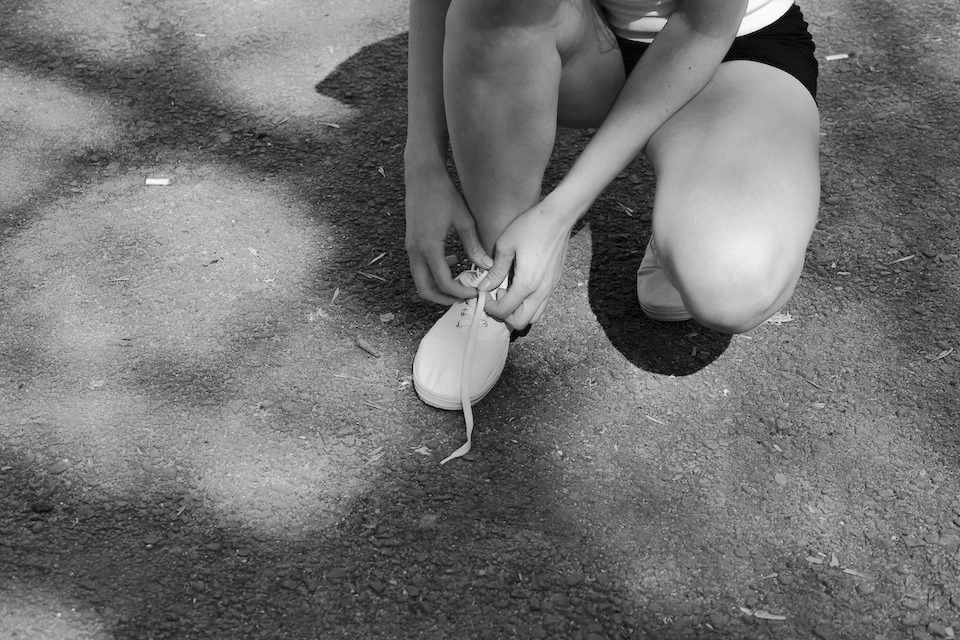*(S)he Said No

*The Lace
Adelina Ivan’s installation at ODD delimits an immersive démarche into a universe of feminine dreams, school uniforms and girlhood pathos. Though her girl characters are trapped in a world on the verge of collapse, entrapped in social restrictions, they nonetheless try to put aside their fair share of triumph. One of them displays an insight into history and an instinct for the future that only a young mind can devise. Her unschooled, unpremeditated gesture is, as one would expect from a girl bearing such name, unapologetically free. A non-consent of this type cannot simply be put in terms of a mere opposition or contradiction, but comes to be understood as in Maurice Blanchot’s dissidence theory, as belonging to an infiniteness of patience. Oftentimes an oppositional stand is not best embodied by an openly edifying, rebellious gesture which, incidentally, does not necessarily entail a categorical separation from the thing contested. It is rather the case that a neutral, non-dialectal passivity possess more reactionary strength, freeing the girl from any type of entanglement, even from her own identity. Atena has not taken oppression for normality; she is just radically indifferent to it.
The young girls in Adelina Ivan`s video installation are bound together by a regimenting system, which writes with their bodies a consistent, narrative, taking away their resistance mechanisms. The moment Atena steps out of the line is arrested through conceptualization. As in Wilhelm Jensen’s “Gradiva” that fascinates mostly with her anonymity within the pantheon and her calm, quiet self-contained step outside the bas-relief which holds her still, Athena’s simple tying of her sport shoe suspends previous mythical semantics and sets up to redefine the meaning of freedom. The gesture is both a performance and a historic intervention without being explicitly demonstrative. By means of reappropiating the grace and dignity of Greek kinetic female statues, her video re-enacts one of the famous postures of Athena – the unimpeded, bending over her leg in order to tie her sandal.
With her head bent forward a little, she held slightly raised in her left hand, so that her sandaled feet became visible, her garment which fell in exceedingly voluminous folds from her throat to her ankles. The left foot had advanced, and the right, about to follow, touched the ground only lightly with the tips of the toes, while the sole and heel were raised almost vertically. This movement produced a double impression of exceptional agility and of confident composure, and the flight-like poise, combined with a firm step, lent her the peculiar grace (Freud: Delusion and Dream.1917)
*(S)he said No
Like a sculptural composition, her simple, realistic and unpretentious gesture becomes abstracted from her body and leads to both a suspension of previous mythical semantization and a repealing of the male gaze. Athena opts out of the line. She is all strength and renewed power. She allows herself a moment of respite. Her gesture is no longer feminine but feminist. Not only political but also aesthetically charged. Athena’s insubordination is not willfully dissident nor demonstratively feminist, although it comes to be perceived also in this manner by a horizon of reception informed by a long history of performance activism. The natural, unschooled gesture gets to heavily contrast with the artificial of the situation and the power structures that generates it. A gym lesson in 1988 is a spectacle of young, healthy, athletic bodies onto which the world is eager to plow and inseminate its contagious forms of authority. The girls move rhythmically their anonymous limbs forming clockwork. They are forced to play into a choreography which does not reflect any of their particular substance, the choreography of the big Other. Athena’s self-composure and witty disobedience is disarming. She forces the LAW to unveil itself as a fragile, insubstantial and virtual, a construct which exists as long as other individuals recognize themselves into it, ground their existence in it and make it a point of reference of their identity. Yet, as Lacan aptly put it, “the only thing that really exists are these individuals and their activity, so this substance is actual only insofar as individuals believe in it and act accordingly”. Radically ambiguous in meaning and intentions, Athena’s gesture intervenes upon the hollowness and disingenuousness of both the situation and the false naturalness of the choreographed moment.
*She would prefer not to
Does her gesture foresee and simulate the monumental political change about to happen ? Is she aware of its magnitude? Her naive, non- scenic, sincere posture suggests otherwise. Atena’s self- composed conduct, her reliance on herself and truthfulness to her gesture seem to create a separating wall between her and the outside world. The gesture may lay the groundwork of a new understanding of activism through passive resistance especially now that activist art had been canonized to a non-shocking, accepted standard. The stepping out of the line act functions stronger in an aesthetic rather than a political manner. This unaware intervention arrives to be understood as political only because it is a disengaged, unassumed and ideologically-removed gesture. A gesture which recalls a certain pale, shy scrivener on Wall Street who intervenes upon the world with the same calm, disarming refusal.
Although dissimilar in many aspects, Atena’s bending over her lace is analogous to Bartleby’s hunching over his desk in a passive and absolute decline of the world put together for him. She is not sending any message to the quasi-hysterical teacher; nor is she engaged in a demonstrative rebellion, however the reaction they both get from the world is paranoid. What triggers the uneasiness and irritability of the partaker consists of the indefiniteness of the act, an indeterminacy so grand that it becomes absolute.
Being which prefers to do so.
Text by Georgiana Cojocaru.